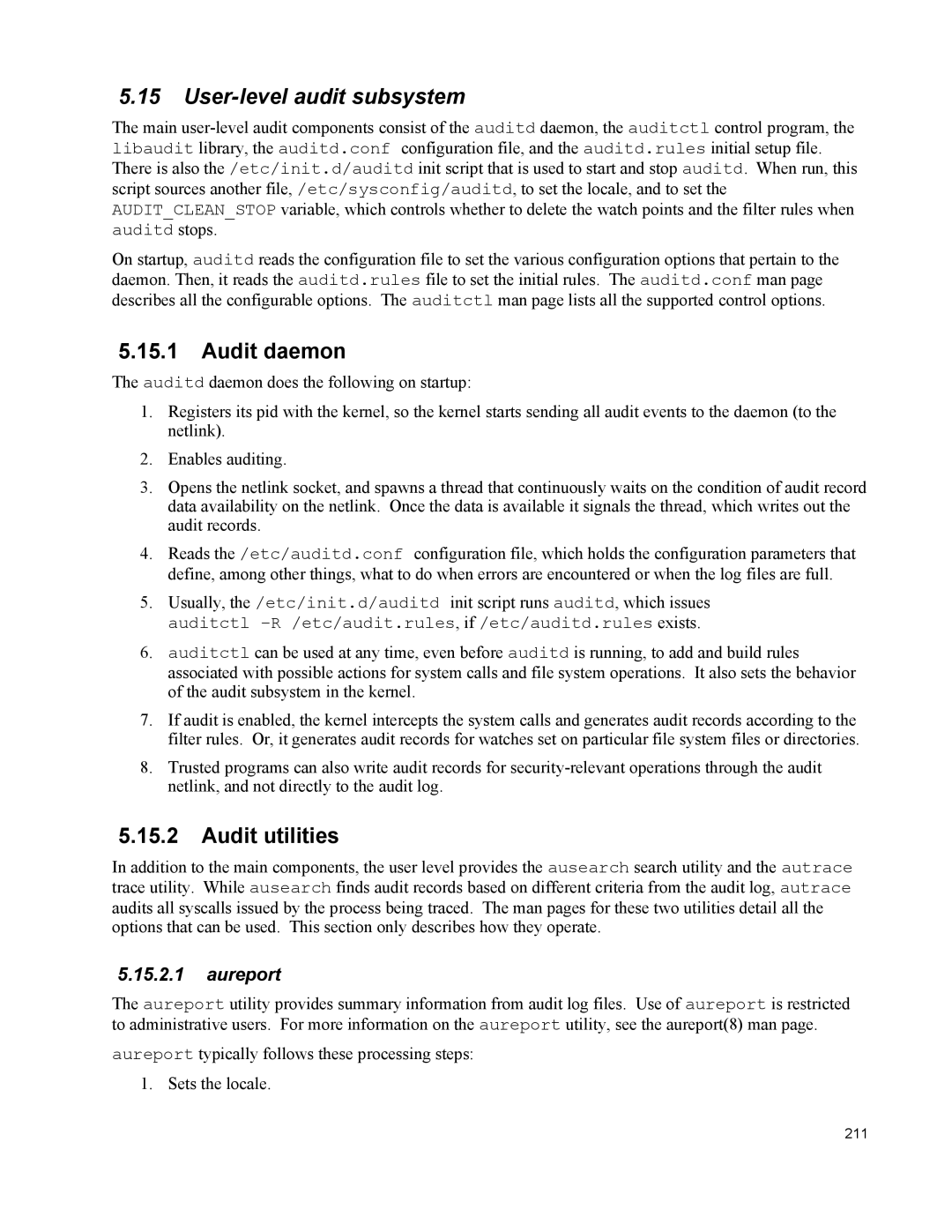5.15User-level audit subsystem
The main
On startup, auditd reads the configuration file to set the various configuration options that pertain to the daemon. Then, it reads the auditd.rules file to set the initial rules. The auditd.conf man page describes all the configurable options. The auditctl man page lists all the supported control options.
5.15.1Audit daemon
The auditd daemon does the following on startup:
1.Registers its pid with the kernel, so the kernel starts sending all audit events to the daemon (to the netlink).
2.Enables auditing.
3.Opens the netlink socket, and spawns a thread that continuously waits on the condition of audit record data availability on the netlink. Once the data is available it signals the thread, which writes out the audit records.
4.Reads the /etc/auditd.conf configuration file, which holds the configuration parameters that define, among other things, what to do when errors are encountered or when the log files are full.
5.Usually, the /etc/init.d/auditd init script runs auditd, which issues auditctl
6.auditctl can be used at any time, even before auditd is running, to add and build rules associated with possible actions for system calls and file system operations. It also sets the behavior of the audit subsystem in the kernel.
7.If audit is enabled, the kernel intercepts the system calls and generates audit records according to the filter rules. Or, it generates audit records for watches set on particular file system files or directories.
8.Trusted programs can also write audit records for
5.15.2Audit utilities
In addition to the main components, the user level provides the ausearch search utility and the autrace trace utility. While ausearch finds audit records based on different criteria from the audit log, autrace audits all syscalls issued by the process being traced. The man pages for these two utilities detail all the options that can be used. This section only describes how they operate.
5.15.2.1aureport
The aureport utility provides summary information from audit log files. Use of aureport is restricted to administrative users. For more information on the aureport utility, see the aureport(8) man page.
aureport typically follows these processing steps: 1. Sets the locale.
211
